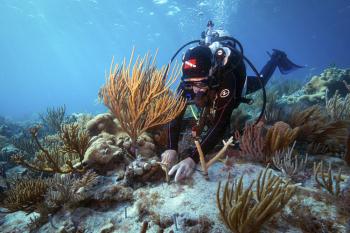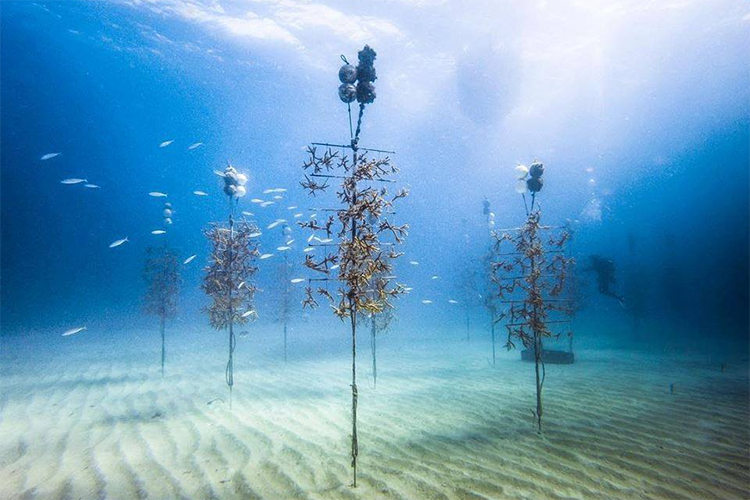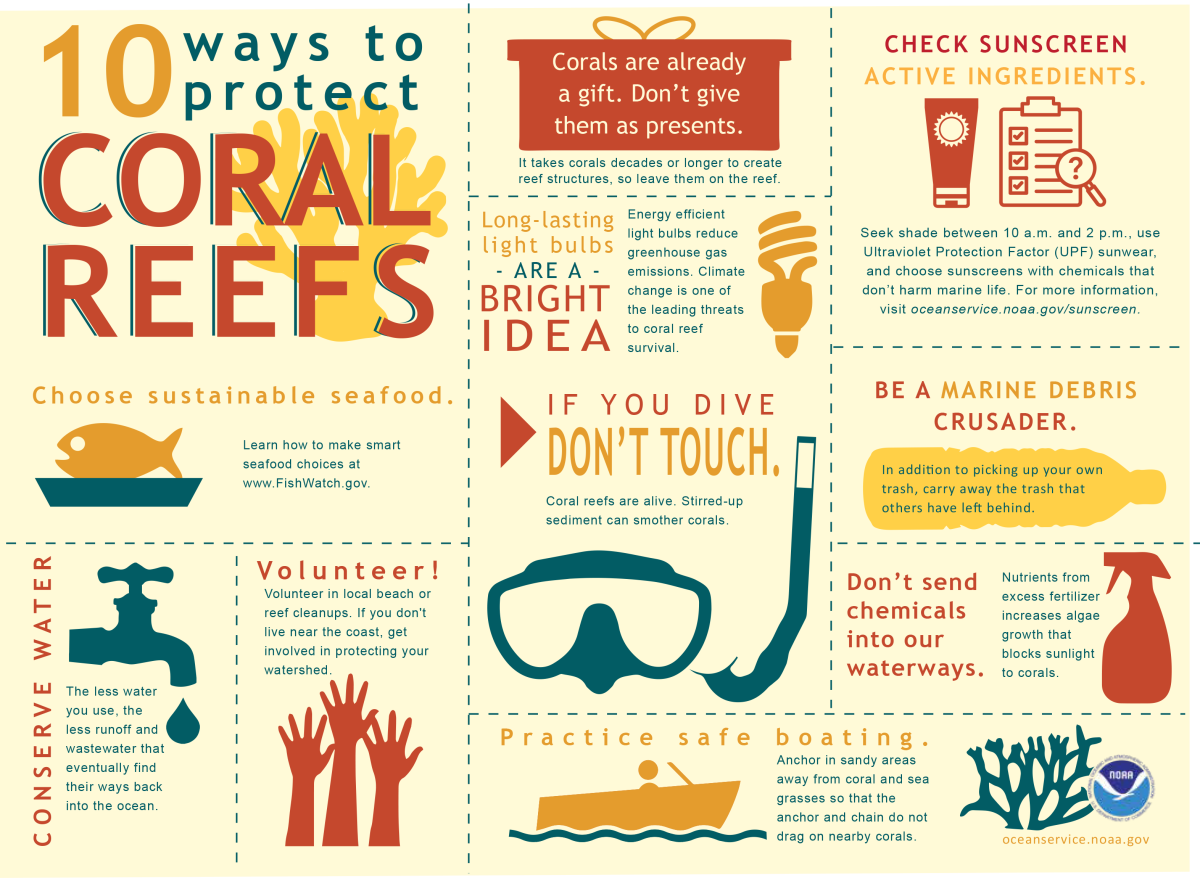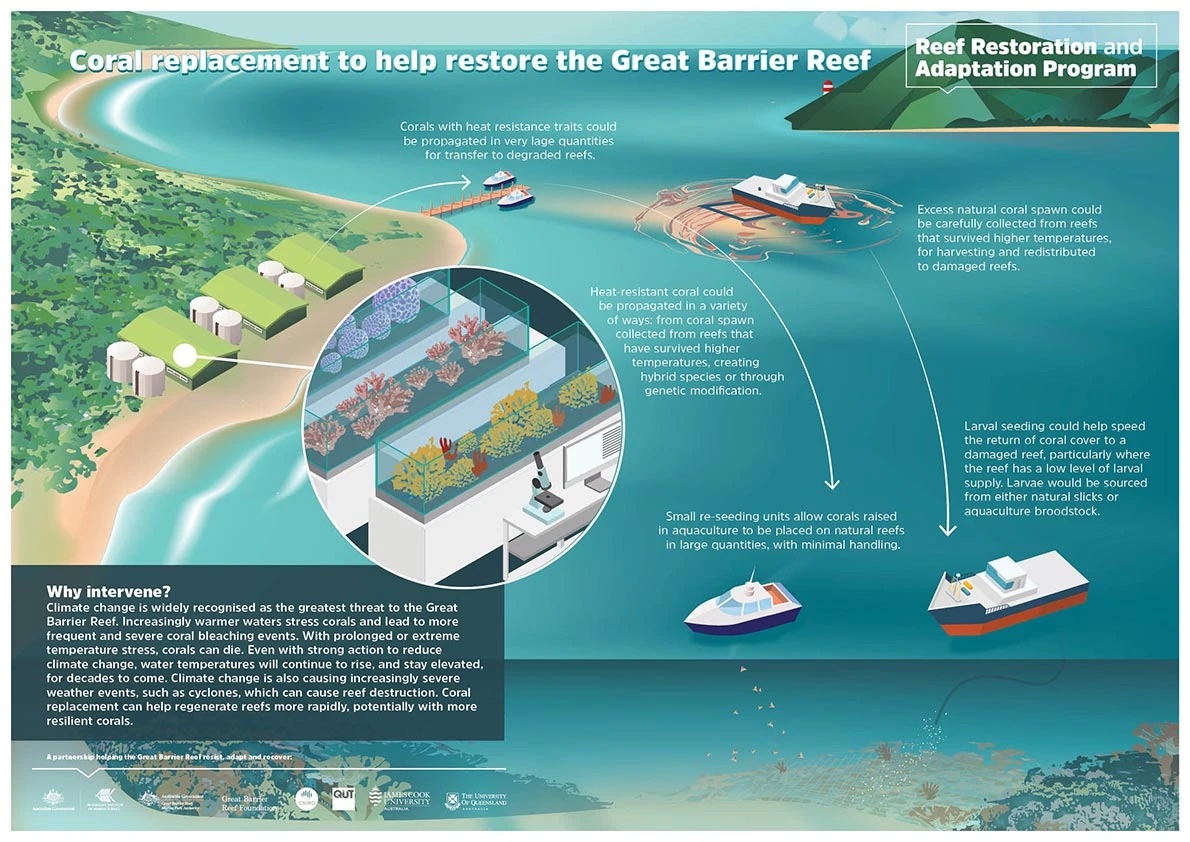
Worldwide coral reefs are suffering from the impacts of climate change. Around the world researchers are pioneering ways to protect and restore coral reefs that have already bleached. Between these efforts and the amazing capacity for corals to adapt to healthier environments, there seems to be some hope.
Worldwide coral reefs are suffering from the impacts of climate change. When the ocean is too warm for microscopic algae to live in coral tissue leave and the corals bleach.
Algae provides corals food. Without it, they bleach and become very unhealthy. Most corals die.
You have probably seen images of huge swaths of the Great Barrier Reef that have bleached. It is a tragedy affecting all the animals and people that are dependent on healthy reefs. “Coral reefs provide food and income through tourism, fisheries, and shoreline protection—valued at tens of billions to trillions of dollars each year globally.” The world needs to drastically cut our C02 emissions to slow climate change. Unfortunately, the ocean is already underway and will continue for a long time. This is why we need to both reduce CO2 emissions and help restore coral reefs NOW.
Around the world researchers are pioneering ways to protect and restore coral reefs that have already bleached. Interventions can take many forms including taking fragments of coral, growing, gardening and outplanting them; to harvesting millions of naturally-produced eggs and sperm that create millions of new individual coral larvae. Along with the specific techniques for creating more corals for reefs, scientists are monitoring growth and ecosystem health, and characterizing the genetics of outplanted coral to make sure there is diversity and therefore, resilience.
Restoration by Outplanting Corals
Scientists are trying to restore and rebuild bleached coral reefs by transplanting healthy corals onto ailing or dead corals. The general method is to find or break off a fragment of coral to grow in an underwater nursery or in a lab. Once the coral fragments have grown large enough—after six to tenth months—scientists outplant them onto the reefs. The corals are attached to the skeletal structures of dead or dying corals, using cement, zip ties and nails. This video shows how it is done.
Looking at the big picture, scientists see reef restoration as a strategy to save the diverse ecosystem services that coral reefs provide. Researchers share data about growth rates and reproduction, something that doesn’t always happen in science. They’re trying to help each other increase the efficiency and scale of growing and restoring corals.
The Race to Restore
One of the pioneers of this method, Dr. David Vaughan at Mote Marine Lab in Florida, found that corals grown in lab nurseries grow 25-50 times the rate they grow in nature. Researchers from around the world have gone to Mote to learn the techniques.

An underwater nursery where new corals are grown. (Photo: Coral Restoration Foundation)
Restoration By Raising Corals from Larvae
Some researchers working on the Great Barrier Reef are growing corals starting with collecting eggs and sperm, called spawn. When corals spawn, their eggs and sperm form slicks in the ocean. This involves collecting the slick “floating enclosures and towing them short distances to adjacent, high-priority areas for release. The aim is to increase the number of corals from the spawning slick that are ultimately recruited into reef populations.”
Another approach to growing new corals is to raise corals from larvae to adult in a lab, return them to an ocean nursery environment to grow more, and then return them to the wild. When corals in established underwater nurseries spawn, researchers collect the eggs and sperm and take them to a lab on land where they’re mixed together to assist in fertilization. When the young corals reach a size to attach to a growing structure, they are moved to the nursery and then eventually outplanted.
The new corals, like those described above, are created sexually, as opposed to those created asexually by microfragmentation. The advantage of these two methods is guaranteeing genetic diversity through sexual reproduction. It gives the hope of restoring the genetic diversity and resilience of corals reefs.
Researchers are studying corals that are more heat tolerant to tease out the what’s behind that tolerance. With this knowledge, scientists can grow species that might survive bleaching events and outplant them into healthy habitats.
For all of the interventions, it’s essential to monitor success, and set global standards. Success may have several aspects including: scale, good growth rate in nurseries, success in outplanting, reproductive success and diversity, and overall ecosystem health.

Restoring corals is not enough. We need to protect healthy coral reefs and make sure restored reefs continue to grow and thrive. Not only can governments protect coral habitat from human threats like pollution, run-off from land, and climate change, but each one of us has a part to play. The best way to help coral reefs is to reduce your carbon footprint. Let your friends know what you’re doing and how they can help.
Watch this video on coral reef restoration

















